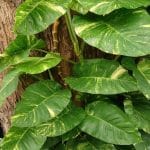
Image Credit – Hema
When you think of lush rainforests and vibrant floral displays, few plants capture that tropical magic quite like Heliconia bihai. Commonly referred to as the Macaw Flower or Wild Plantain, this bold, upright perennial is a true showstopper with its dramatic foliage and eye-catching, colorful bracts. Whether you’re a seasoned gardener or a tropical plant enthusiast, adding Heliconia bihai to your collection brings both beauty and biodiversity to your landscape. In this guide, we’ll explore everything you need to know about growing, caring for, and enjoying this botanical masterpiece.
Plant Profile: Heliconia bihai

Botanical Overview
- Botanical Name: Heliconia bihai
- Common Names: Macaw Flower, Parrot’s Beak, Wild Plantain
- Plant Family: Heliconiaceae
- Native Region: Caribbean, Northern South America
Heliconia bihai is admired for its upright flowering habit and vivid bracts, which come in rich tones of red, orange, yellow, and pink. These bracts aren’t true flowers, but they surround tiny tubular blooms that attract pollinators like hummingbirds.
Growing Requirements
Light
Heliconia bihai thrives in full sun to partial shade. While it tolerates some shade, flowering is more prolific when the plant receives at least 5–6 hours of sunlight daily.
Soil
This tropical beauty prefers rich, loamy, and well-drained soil. Mix compost or organic matter into the soil to improve fertility and drainage.
Water
Heliconia bihai loves moisture and requires consistent watering, especially during hot and dry months. Keep the soil evenly moist but avoid waterlogging, which can lead to root rot.
Temperature and Humidity
Being a tropical plant, it needs warm temperatures (65–95°F / 18–35°C) and high humidity. It’s not frost-tolerant, so in cooler zones (below USDA Zone 9), it should be grown in containers and brought indoors during the winter.
Fertilizer
Feed with a balanced, slow-release fertilizer monthly during the growing season (spring through early fall) to encourage lush foliage and bright bracts.
🌿Care Tips
- Mulch around the plant’s base to retain soil moisture and regulate temperature.
- Deadhead or prune spent flower stalks to stimulate new growth.
- Protect from wind, as the large leaves can tear easily.
- In cooler climates, potting Heliconia bihai allows you to move it indoors when temperatures drop.
Propagation
Heliconia bihai is best propagated through rhizome division. Each rhizome should have at least one healthy growing eye. Spring is the ideal time to divide and plant the rhizomes in nutrient-rich, moist soil.
Landscape & Design Uses
- Tropical borders and hedges
- Eye-catching container plants
- Perfect for poolside gardens
- Used in cut flower arrangements due to long-lasting bracts
Wildlife Benefit
The bright bracts of Heliconia bihai are not only visually stunning but also serve as pollinator magnets. They attract hummingbirds, bees, and butterflies, making them excellent for eco-friendly gardens.
Fun Facts
- Despite their bird-like appearance, Heliconias are not related to birds of paradise.
- The name “bihai” is derived from local Caribbean terminology.
- Indigenous cultures have used Heliconia species for folk medicine and crafting.
Few plants bring the bold drama and tropical feel that Heliconia bihai offers. With its spectacular bracts, towering height, and pollinator-friendly nature, this plant is a stunning addition to any tropical or subtropical garden. While it does require warm conditions and attentive care, the reward is a truly exotic bloom that transforms any space into a jungle paradise. If you’re ready to add a tropical twist to your garden, Heliconia bihai is a brilliant place to start.
Frequently Asked Questions
How tall does Heliconia bihai grow, and can it be grown in pots?
Heliconia bihai can grow 6 to 10 feet tall, making it a bold vertical element in tropical gardens. Yes, it can be grown in large pots, especially in cooler climates, allowing you to bring it indoors during the winter months.
How often should I water my Heliconia bihai?
Water Heliconia bihai consistently to keep the soil moist, especially during the growing season. Avoid letting the soil dry out completely, but also ensure it has good drainage to prevent waterlogging.
Can Heliconia bihai grow indoors?
Yes, it can be grown indoors in a large container with bright, indirect light and high humidity. Use a humidifier or place the pot on a water tray to maintain moisture levels indoors.







